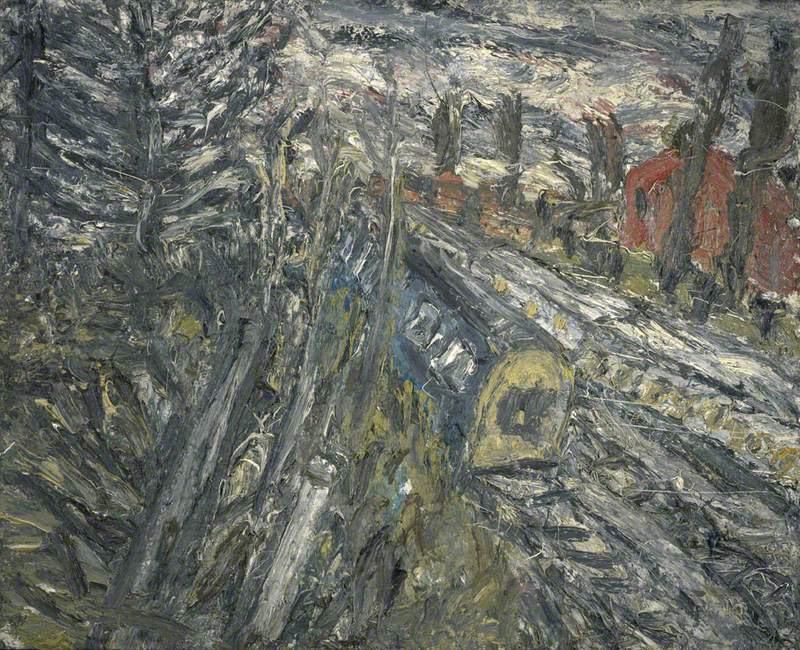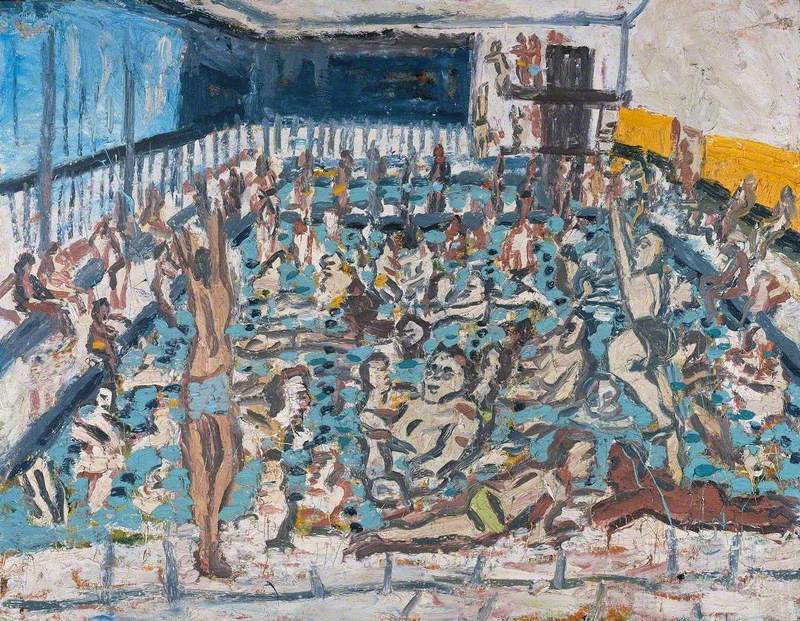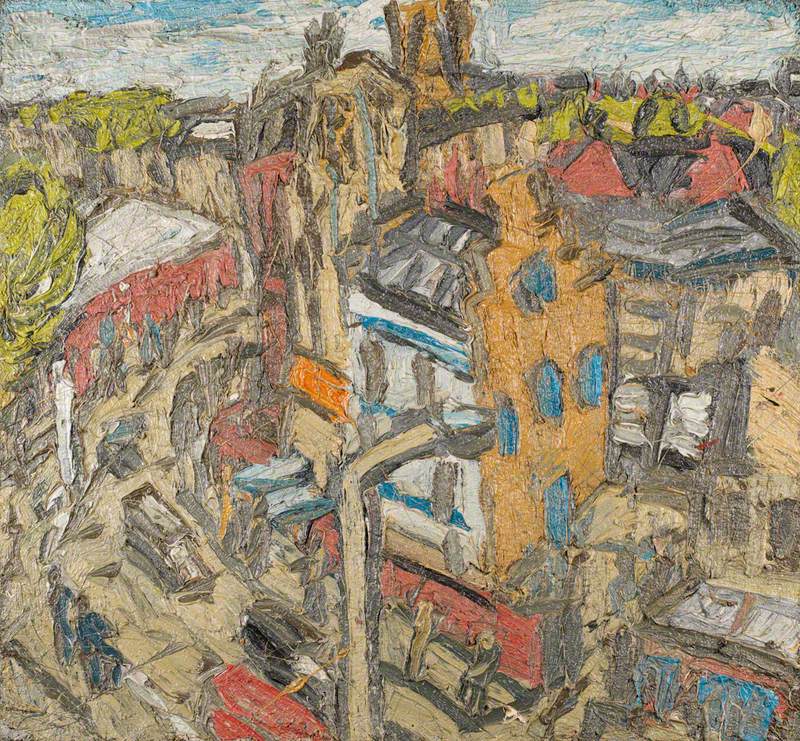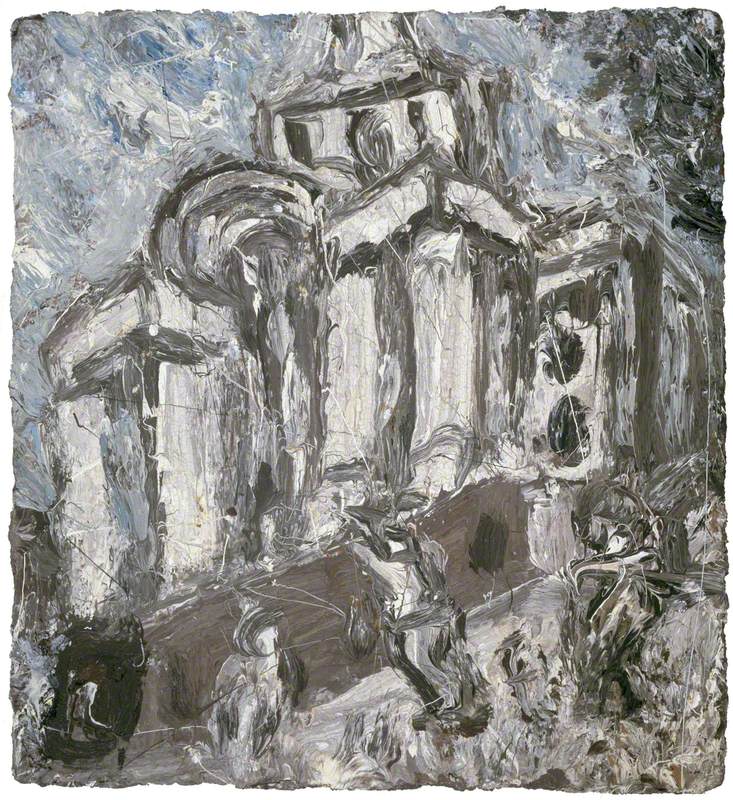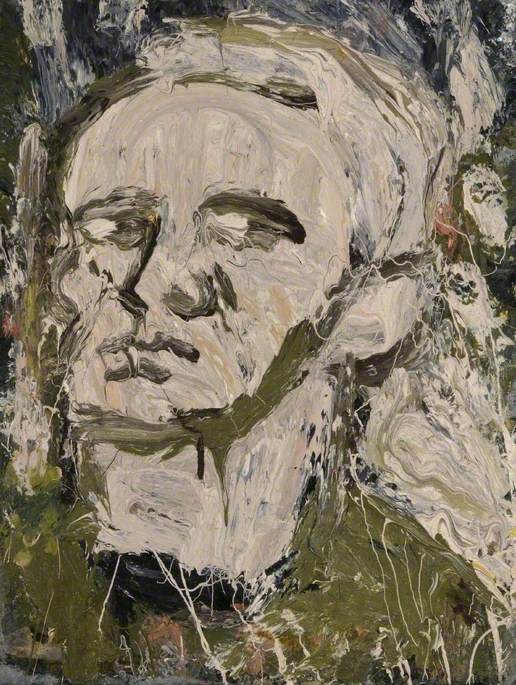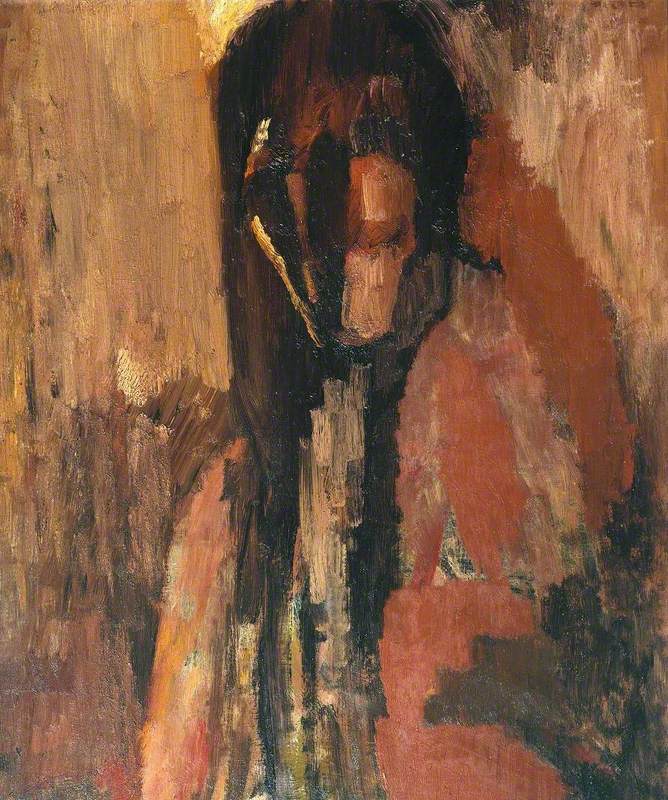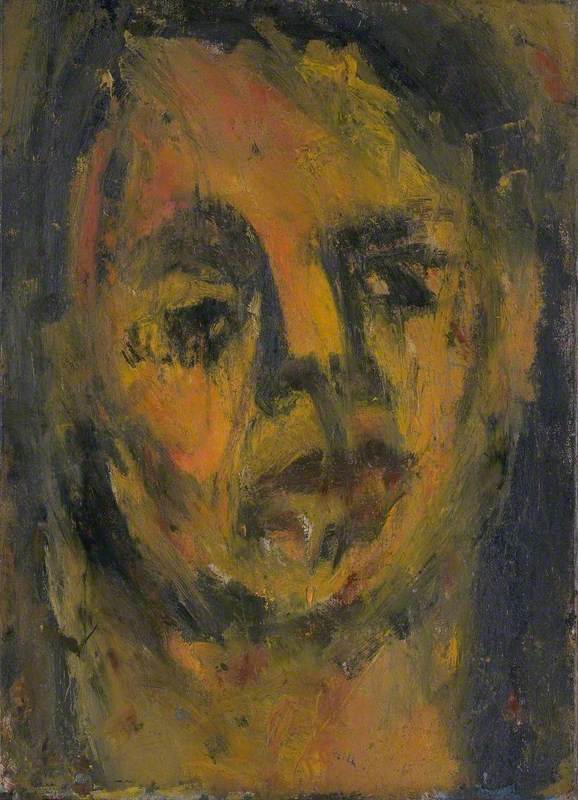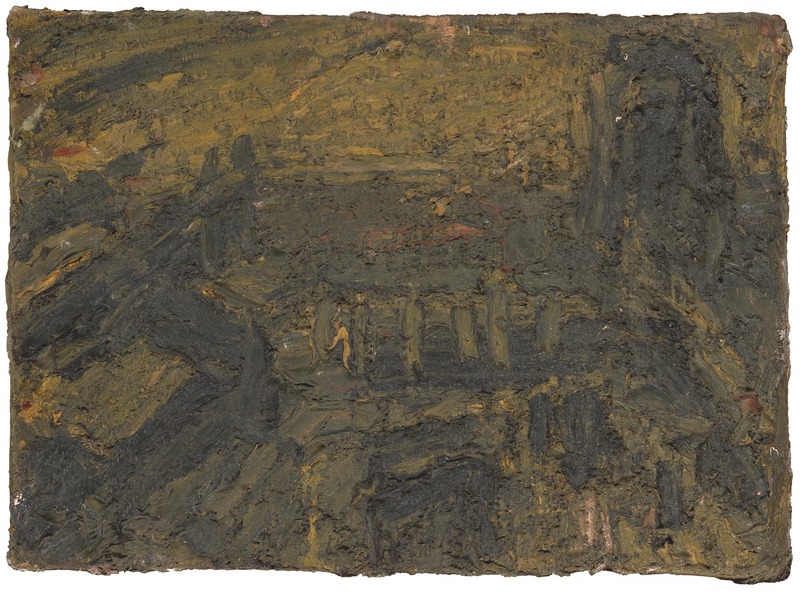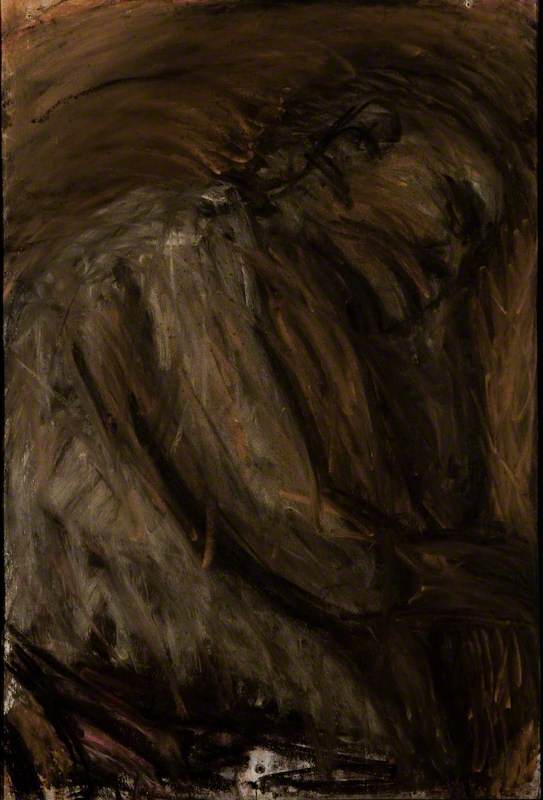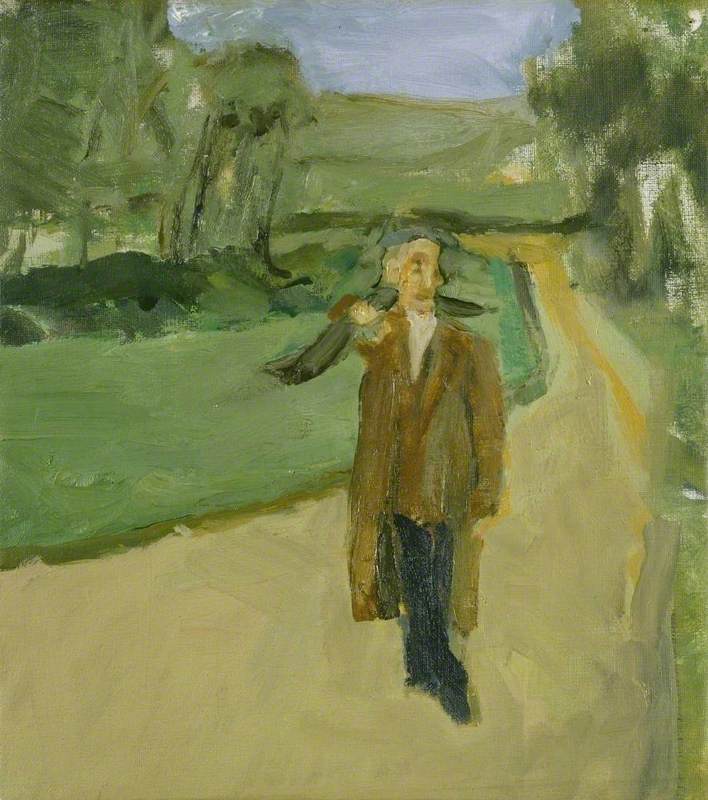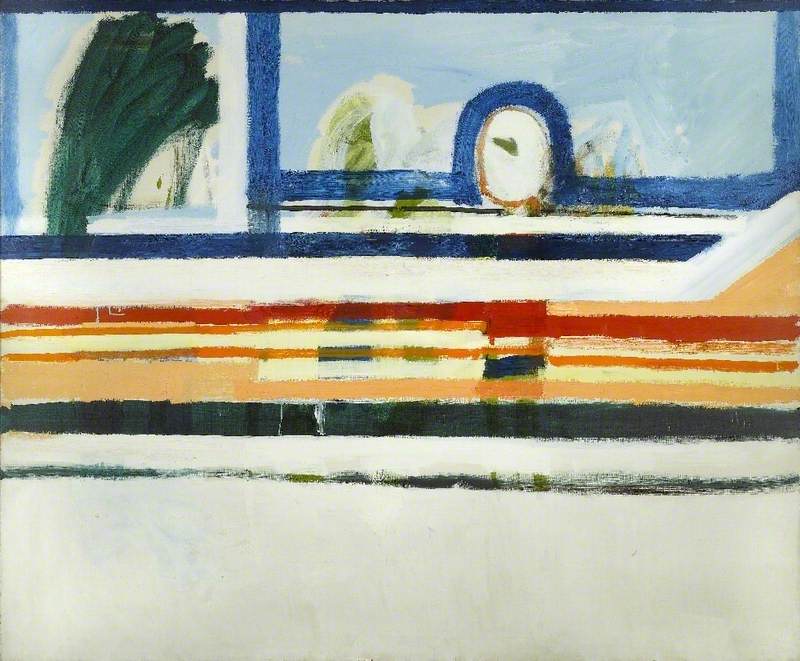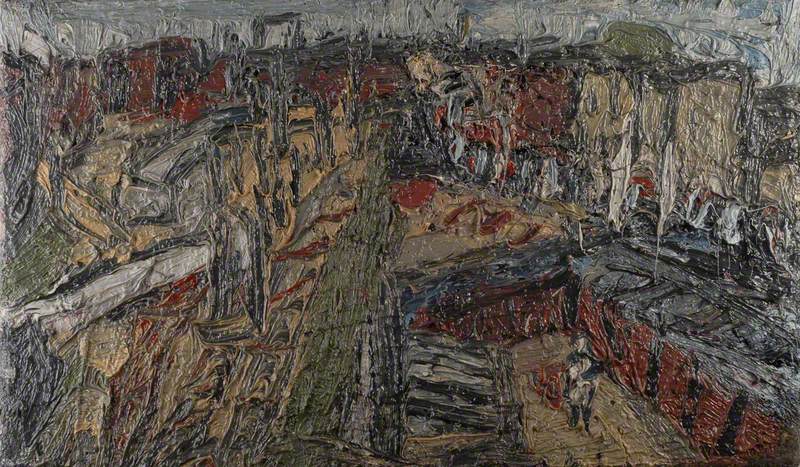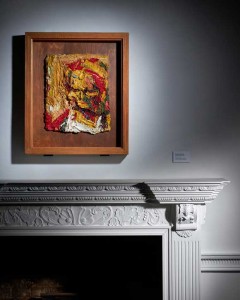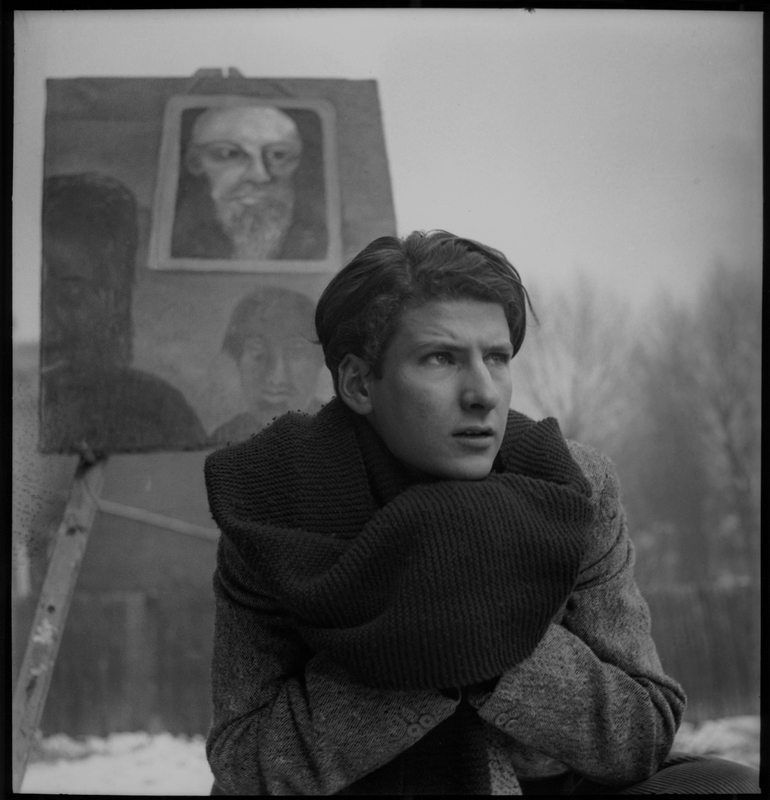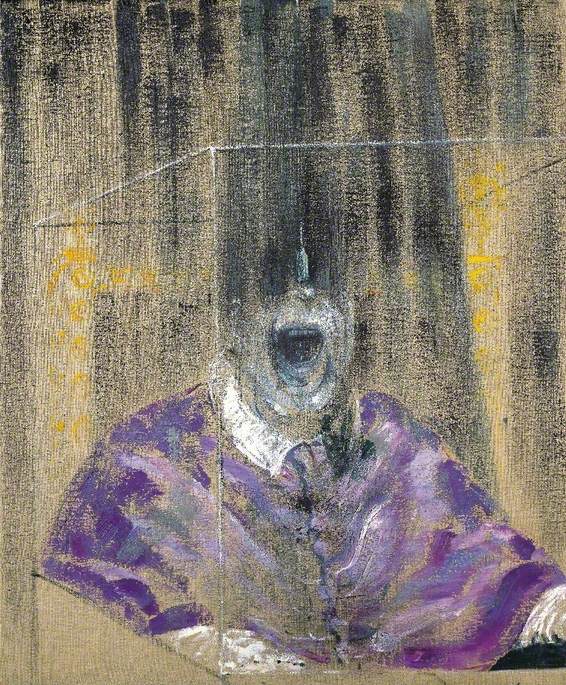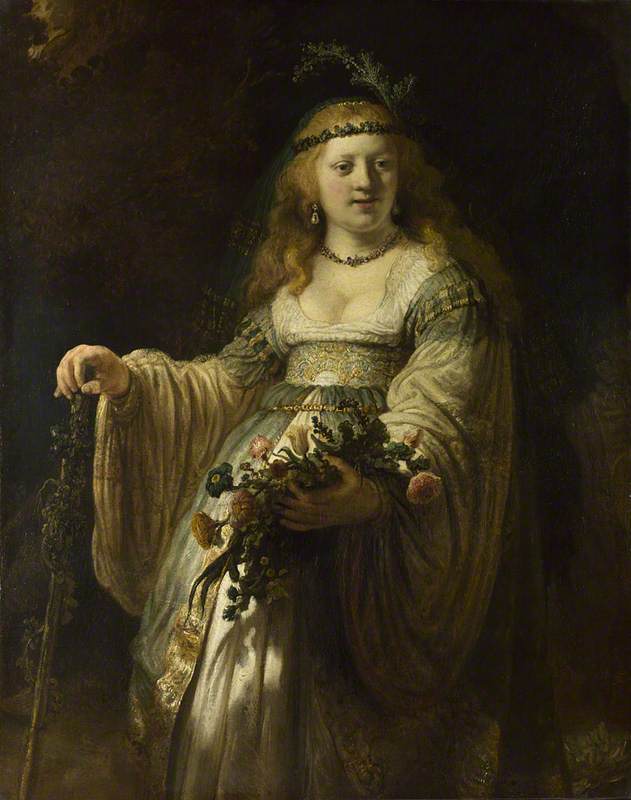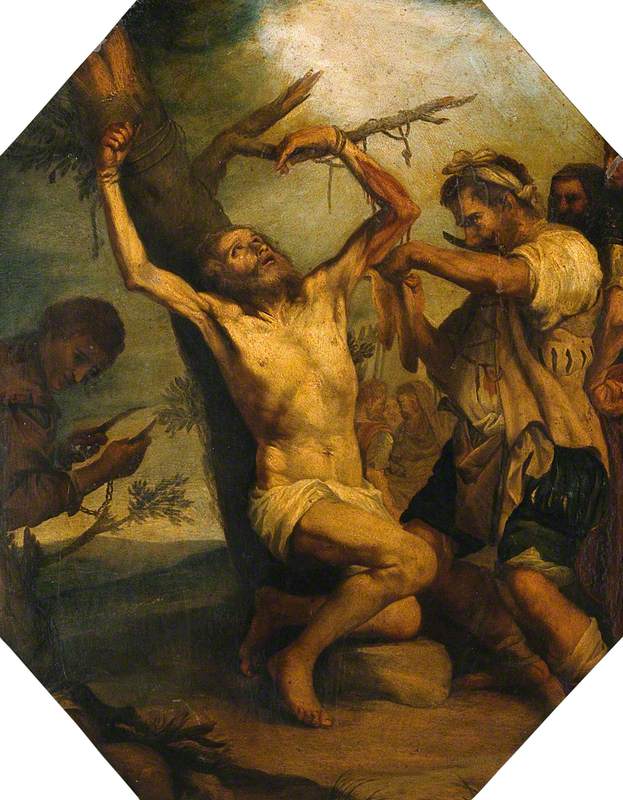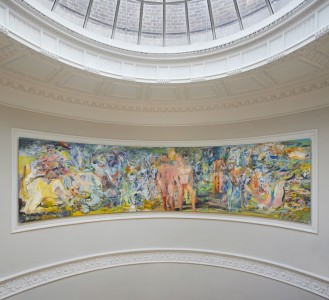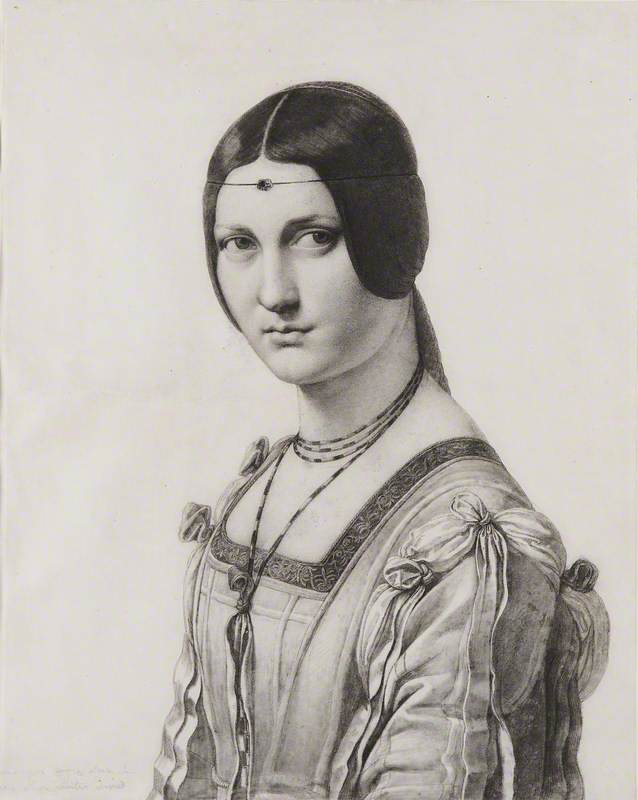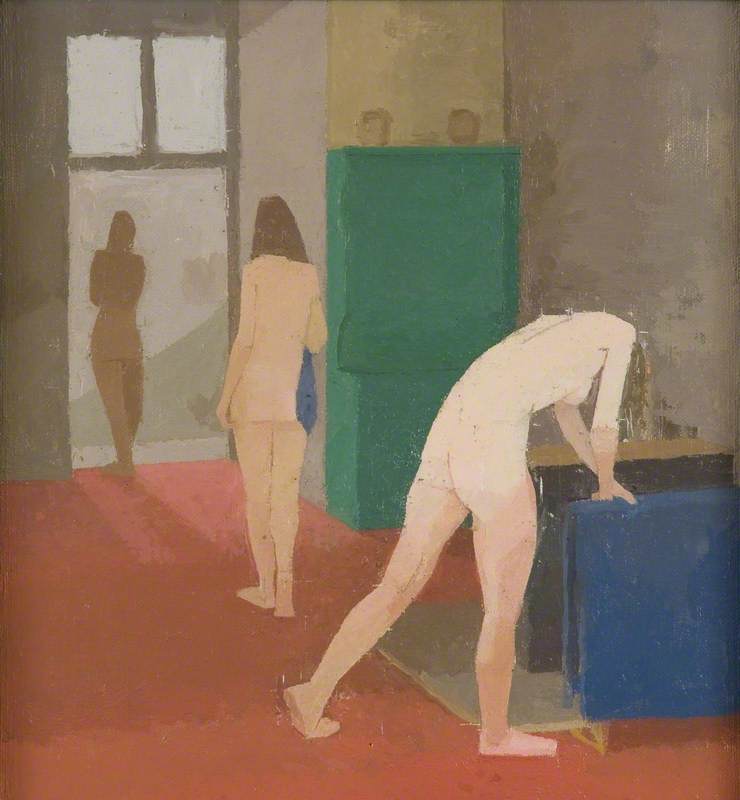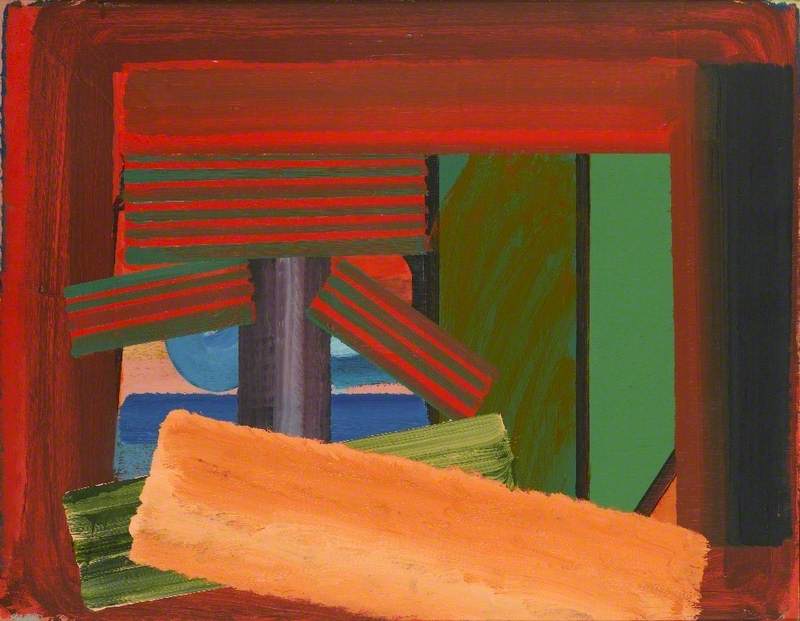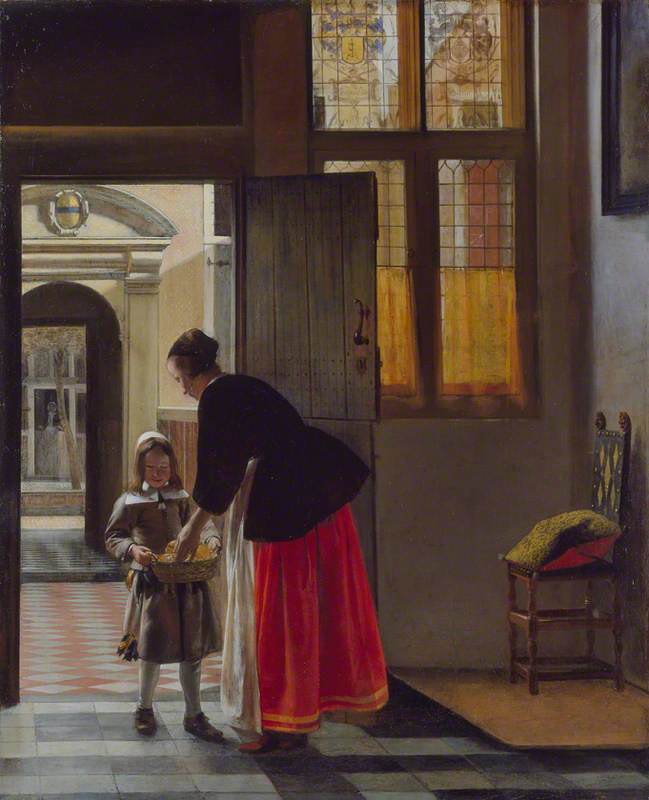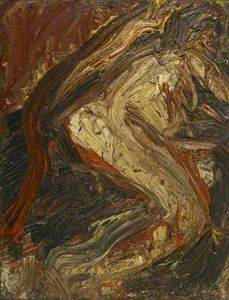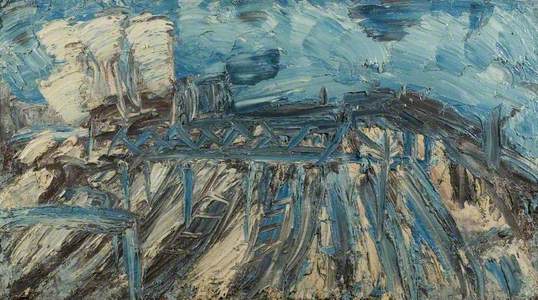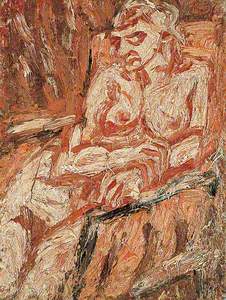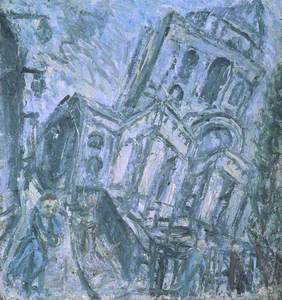Leon Kossoff (b.1926) was 69 years old when he held his first solo exhibition outside the UK. He represented Great Britain at the Venice Biennale in 1995, following in the footsteps of previous Pavilion artists Frank Auerbach, his contemporary and friend, and David Bomberg, his former tutor. The following year, the Tate Gallery (renamed Tate Britain in 2000) granted Kossoff a solo retrospective.
After decades spent making whirling, impasto paintings and sketches of friends, family and his favoured London haunts – his 1987 painting Christchurch Spitalfields, Spring was among his works from that decade on show in Venice – Kossoff had finally taken his place in the pantheon of great British painters.
Born in 1926 in North London to Ukrainian Jewish émigré parents, Kossoff attended Saint Martin's School of Art in 1949, where he met Auerbach, and Borough Polytechnic from 1950–1952, where he and Auerbach attended night classes taught by Bomberg. Already known as a bombastic painter unafraid of attacking his canvases with multilayered globules of paint, Bomberg excited the young artists with what he called 'the spirit in the mass'.
New movements in abstract painting were taking artistic subjects out of their natural environments and into other-worldly isolation. This didn't work for Bomberg who thought artworks should convey a sense of surroundings and history. For him, artists should represent subjects and objects as in their true, unromanticised spirit.
Building Site, Victoria Street
1961
Leon Kossoff (1926–2019) 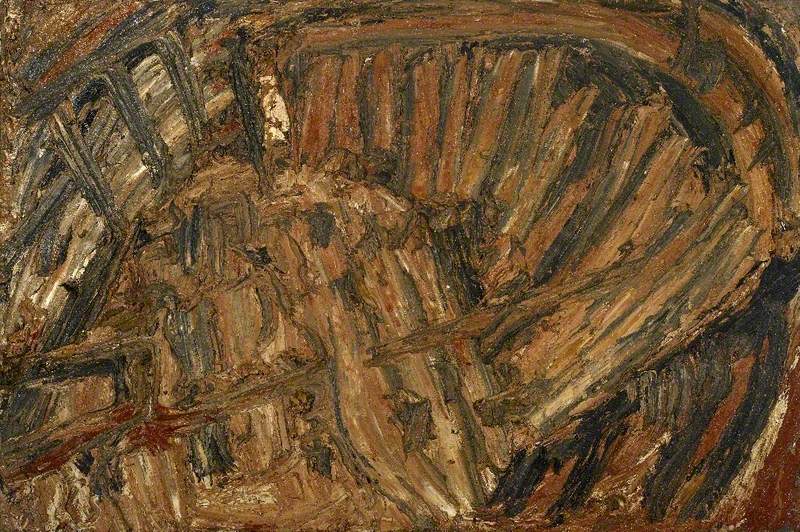
This was freeing for Kossoff. He now had licence to create artworks loaded with paint based on his instinctive, emotional reactions to the people and places around him. Furthermore, he could fold in his preoccupation with the compositional styles of the Old Masters whose work had fascinated Kossoff since he was young – particularly the energy of crowd scenes portrayed by Nicolas Poussin, Rembrandt and Rubens.
Study for Copy of 'Cephalus and Aurora' by Poussin No. 2
1976
Leon Kossoff (1926–2019) 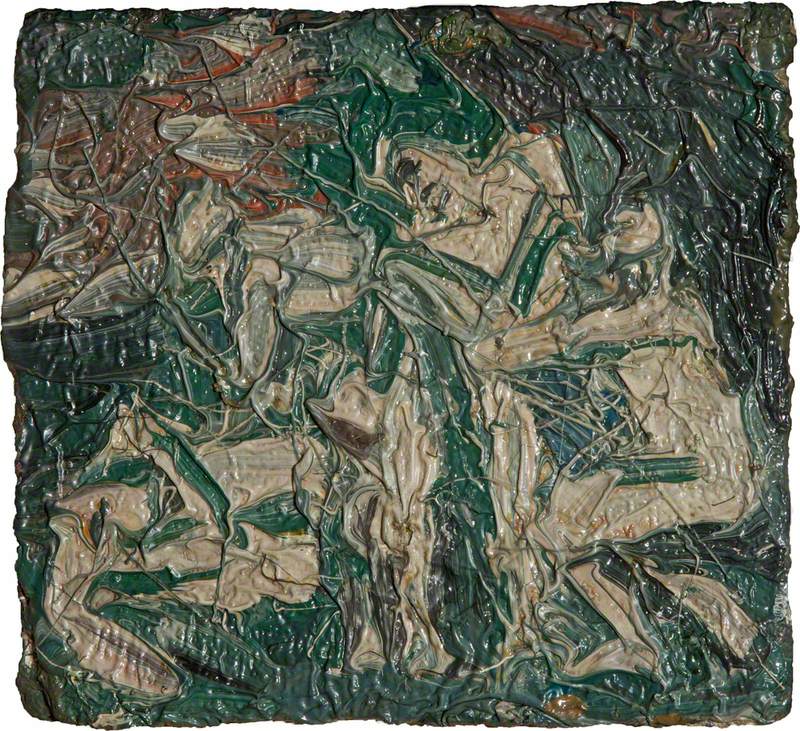
From Rubens: The Judgment of Paris
c.1998, charcoal on paper by Leon Kossoff (1926–2019) 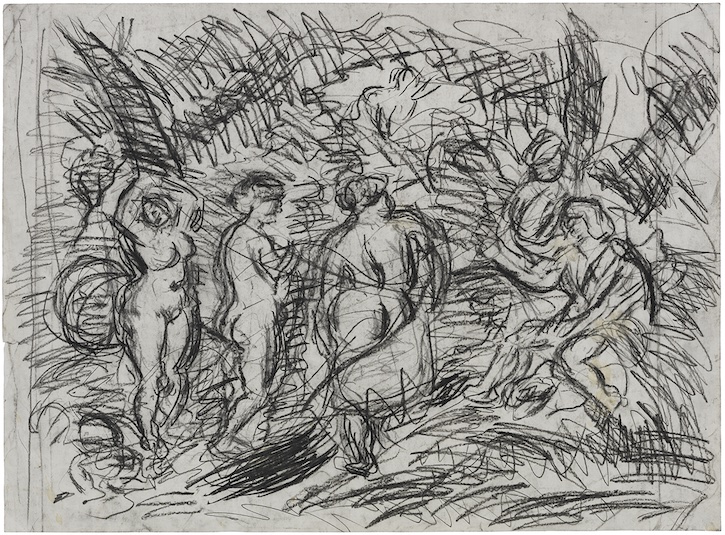
In step with other post-Second World War thinkers and artists, Kossoff's work developed by reflecting on the consequences and vicissitudes of the human condition. He had experienced the aftermath of war first hand, having served in the 2nd Battalion Jewish Brigade between 1945 and 1949, and his approach to painting resonated with both Bomberg's spirit-driven thinking and prevailing existentialist questioning.
His Self Portrait from 1952 shows a face emerging from a murky, uneven background, with Kossoff's thick brushwork evoking the essence of a young man trying to find his way in the world. From 1953–1956 Kossoff studied at the Royal College of Art where he extended his explorations of the manifestations of war.
His Small City Landscape, Evening (1956) is one of a number of Kossoff's studies of a London flattened by the Blitz, beginning his lifelong interest in representing the physicality of buildings.
By now married with a son, at the end of the 1950s Kossoff was a member of the art teaching faculties at Saint Martin's and the Chelsea School of Art. In 1963 he drew his mother Rachel for Woman Resting.
Drawing was important to Kossoff. Studying the Old Masters had revealed the importance of setting out ideas before attacking the canvas and, here, he uses charcoal and pastels to reinforce his commitment to building layer after layer until a form appears. And, although the sitter is at rest, Kossoff's scratches and scribes project a body that's tossing and turning in her sleep.
Kossoff and Auerbach had remained friends (Kossoff passed his Morning Crescent studio onto Auerbach in 1954) and, by the mid-1960s, Auerbach had fallen in with a loose collective of artists who would eventually become known as the School of London.
While Kossoff wasn't pulled into the carousing world Auerbach enjoyed with the likes of Francis Bacon and Lucian Freud, Kossoff did share the artists' steadfast adherence to form and figurative painting.
The work of other contemporaneous painters such as Michael Andrews, Howard Hodgkin and R. B. Kitaj (who coined the 'School of London' term for a 1976 group exhibition he curated) was similarly based around avoiding the trend for abstraction and continuing to use paint to examine the human body and the physical world.
Andrews' Study for a Man in a Landscape (1959) and Hodgkin's Luxembourg Gardens (1962) are continuations of Bomberg's free-flowing directive, where tone and colour are applied intuitively.
In 1966 Kossoff and his family moved across London to Willesden Green. Despite the industrial nature of his Willesden Junction, Summer painting of the same year, the artwork has a celebratory undertone.
Willesden Junction, Summer 1966
Leon Kossoff (1926–2019) 
Kossoff was open about his love for the capital. 'London,' he said, 'like the paint I use, seems to be in my bloodstream.' Kossoff would paint several London train stations in later life, and this take on Willesden Junction is striped with the beautiful blues of a summer sky. Even the train tracks seem to move upwards towards the passing white clouds.
Willesden and its surrounds provided more rich pickings for Kossoff. He took his son to the swimming pool that was built near their home in 1967; his Children's Swimming Pool, Friday Evening, Children's Swimming Pool, Autumn Afternoon and Children's Swimming Pool, Autumn paintings (made between 1970 and 1972) find Kossoff recreating the pool's crowded clamour. A short easterly walk away, Kilburn underground station afforded him more bustling, urban inspiration.
Outside Kilburn Underground, Summer 1976
1976
Leon Kossoff (1926–2019) 
The exhibition R. B. Kitaj curated in 1976 for London's Hayward Gallery, entitled 'The Human Clay', underlined the importance of figuration in contemporary art. Kossoff's work was included alongside pieces by Bacon, Freud, Auerbach, Andrews, Hodgkin and more. In an essay for the exhibition's catalogue, Kitaj wrote: 'There are ten or more people in this town, or not far away, of world class, including my friends of abstract persuasion. In fact I think there is a substantial School of London.' The name stuck and Kossoff was inextricably linked to some of the most important figures in contemporary art.
The exhibition also provided a springboard for Kossoff and, the following year, he was one of 18 artists selected for the 'Colour in British Painting' exhibition. Kossoff's 1974 painting View of Dalston Junction was included by the exhibition's curator, art historian Alan Bowness, and the group of artworks travelled around the world, starting in Brazil and taking in Japan and Thailand along the way. Kossoff used his heavy impasto technique to create an undulating view of the railway station.
The oil painting ripples with the business of moving passengers, even though there is only one figure on the platform. Bowness was a collector of Kossoff's work, and he used the 'Colour in British Painting' exhibition to introduce the artist's use of muted, earthy tones to a wider, more international audience.
Notoriously modest and publicity-shy, when the National Gallery in London staged their 'Leon Kossoff: Drawing from Painting' exhibition in 2007 Kossoff broke cover to talk about his work in a TV news interview for the first time.
The survey, which examined Kossoff's relationship with the Old Masters, showcased how Kossoff used drawing to help him understand the creative process. As the camera followed him around the gallery Kossoff admitted he was still learning, even at the age of 80. 'Every day I start,' he said, 'I think today I might teach myself to draw. Every day is a new beginning.'
Arnold Circus
2012, charcoal & pastel on paper by Leon Kossoff (1926–2019) 
Leon Kossoff's twin passions for London and the Old Masters continued into his later life. Kossoff's father had worked as a baker while his son was growing up and, in 2012, Kossoff drew a corner of the Arnold Circus roundabout near the bakery's original site in East London. Created in 2013, Kossoff's From Titian: The Flaying of Marsyas finds him meditating on another Old Master, this time redrawing Titian's macabre 1575 depiction of a tale from the Roman poet Ovid.
In 2018, the year before Kossoff died aged 92, Tate Britain's 'All Too Human' exhibition showcased the twentieth century's greatest British artists and how their work embodied the rawness of human figures in the modern world. Kossoff's work was there, standing shoulder to shoulder with the likes of Bomberg, Auerbach, Bacon and Freud, in his rightful position as one of the true titans of modern painting.
Simon Coates, writer
This content was supported by Jerwood Foundation
